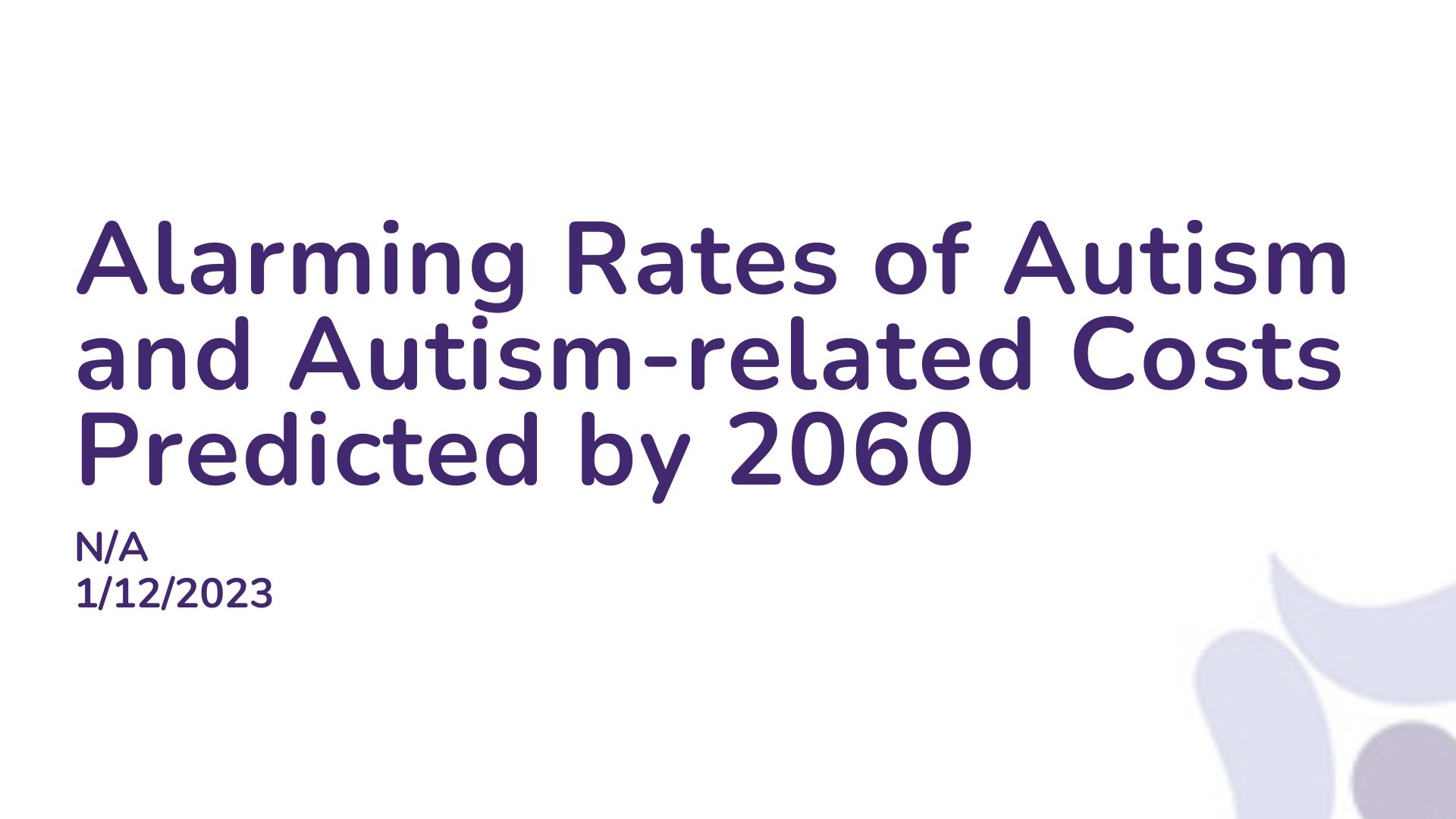Summary:
Rates of autism spectrum disorder (ASD) have reached unprecedented levels. As a result, many researchers have attempted to forecast the burden and cost of ASD; however, they often do not account for the expected rise in prevalence and assume that ASD rates will remain stable. This assumption distorts projections, leading to inaccurate forecasts of current costs for adults with ASD and the overall cost to the healthcare system. This study estimated the cost of ASD in the U.S. for the first time using a model that incorporates the true increase in ASD prevalence. The findings suggest that current ASD costs are somewhat lower, but future costs are significantly higher than previous estimates. The study estimated that $223 billion per year was spent in 2020, rising to $589 billion in 2030, $1.36 trillion in 2040, and $5.54 trillion per year by 2060. These figures underscore the substantial impact of prioritizing ASD prevention by addressing environmental factors that increase ASD risk.
Abstract:
As the rates of diagnosed autism spectrum disorders (ASD) reach unprecedented levels, numerous analyses have attempted to model, quantify, and forecast the societal cost of ASD at the country level. These forecast models focus on costs by category and over the lifespan, but place far less emphasis on the effect of rising ASD rates on societal costs over time. Most models make the unsupported assumption that rates have remained constant. As a result, these models obscure understanding and suppress awareness of the most urgent societal issues that surround rising ASD prevalence. Furthermore, they overstate the current costs incurred for the population of adults with ASD, while simultaneously and dramatically underestimating the magnitude of future costs as the ASD population multiplies. The cost of ASD in the U.S. is estimated here using a forecast model that for the first time accounts for the true historical increase in ASD. Model inputs include ASD prevalence, census population projections, six cost categories, ten age brackets, inflation projections, and three future prevalence scenarios. Current ASD costs are somewhat lower and projected future costs are much higher than other societal cost of autism models. In this model, total base-case costs of $223 (175–271) billion/year are estimated in 2020; $589 billion/year in 2030, $1.36 trillion/year in 2040, and $5.54 (4.29–6.78) trillion/year by 2060, with substantial potential savings through ASD prevention via identifying and better regulating environmental factors that increase autism risk. This tsunami of rapidly increasing costs raises pressing policy questions. Rising prevalence, the shift from child to adult-dominated costs, the transfer of costs from parents onto government, and the soaring total costs demand an urgent focus on prevention strategies.
Article Publication Date: 1/12/2023
DOI: N/A



